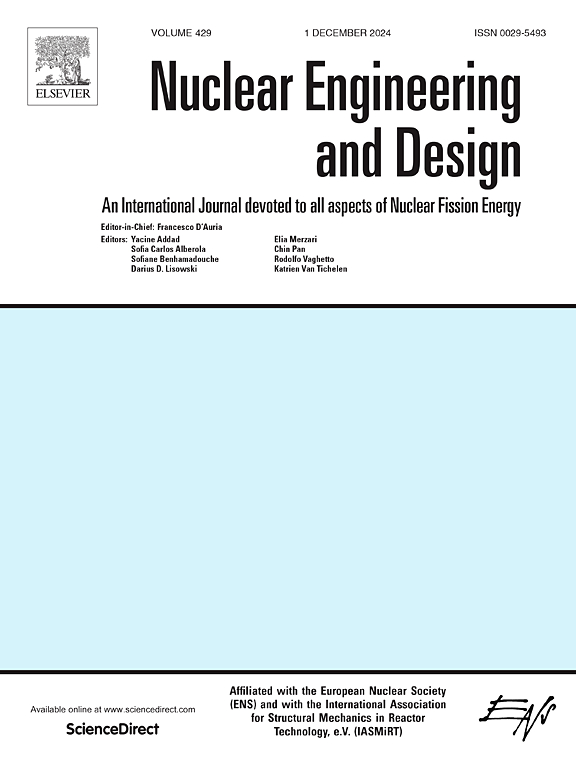Analysis of Thermalhydraulics characteristics on constant and variable models for pressure tube radial expansion by using the ASSERT code in a CANDU6 channel
IF 1.9
3区 工程技术
Q1 NUCLEAR SCIENCE & TECHNOLOGY
引用次数: 0
Abstract
Because of extreme conditions such as high temperature, high pressure and irradiation, gradual radial expansion of pressure tube in the CANadian Deuterium and Uranium 6 (CANDU6) reactors occurs in the radial direction. Due to the decrease in the thermal margin of the channel, the Trip Set Point (TSP) for reactor trip should be decreased as well, to ensure a sufficient magnitude of safety margin for the reactor. Then operating power should be reduced as time goes by. Making precise thermal margin predictions is therefore a crucial activity. The ASSERT code has sub-channel level resolution and 2-dimensional analysis is possible. For these reasons, a lot of activities are performed using the ASSERT code. In this study, the ASSERT code calculation results from different pressure tube radial expansion models were compared with each other. With this comparison, it was examined how details in the model affect the critical results, such as Critical Channel Power (CCP) and T/H characteristics. One model used a constant radial expansion quantity along the axial flow direction, and the other using varying radial expansion quantity along the axial flow direction. The expansion area or volume was conserved so that consistency was maintained in this study.
求助全文
约1分钟内获得全文
求助全文
来源期刊

Nuclear Engineering and Design
工程技术-核科学技术
CiteScore
3.40
自引率
11.80%
发文量
377
审稿时长
5 months
期刊介绍:
Nuclear Engineering and Design covers the wide range of disciplines involved in the engineering, design, safety and construction of nuclear fission reactors. The Editors welcome papers both on applied and innovative aspects and developments in nuclear science and technology.
Fundamentals of Reactor Design include:
• Thermal-Hydraulics and Core Physics
• Safety Analysis, Risk Assessment (PSA)
• Structural and Mechanical Engineering
• Materials Science
• Fuel Behavior and Design
• Structural Plant Design
• Engineering of Reactor Components
• Experiments
Aspects beyond fundamentals of Reactor Design covered:
• Accident Mitigation Measures
• Reactor Control Systems
• Licensing Issues
• Safeguard Engineering
• Economy of Plants
• Reprocessing / Waste Disposal
• Applications of Nuclear Energy
• Maintenance
• Decommissioning
Papers on new reactor ideas and developments (Generation IV reactors) such as inherently safe modular HTRs, High Performance LWRs/HWRs and LMFBs/GFR will be considered; Actinide Burners, Accelerator Driven Systems, Energy Amplifiers and other special designs of power and research reactors and their applications are also encouraged.
 求助内容:
求助内容: 应助结果提醒方式:
应助结果提醒方式:


